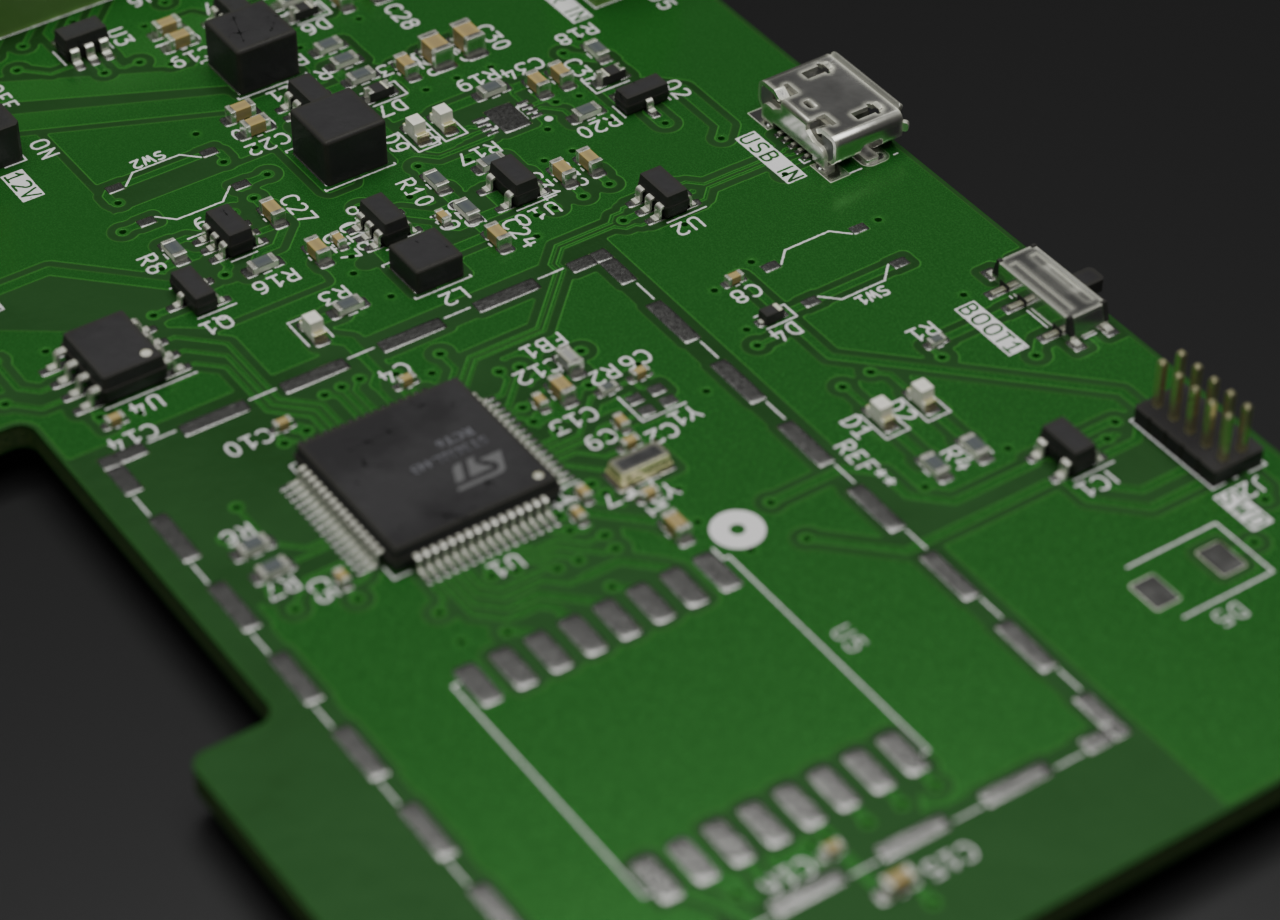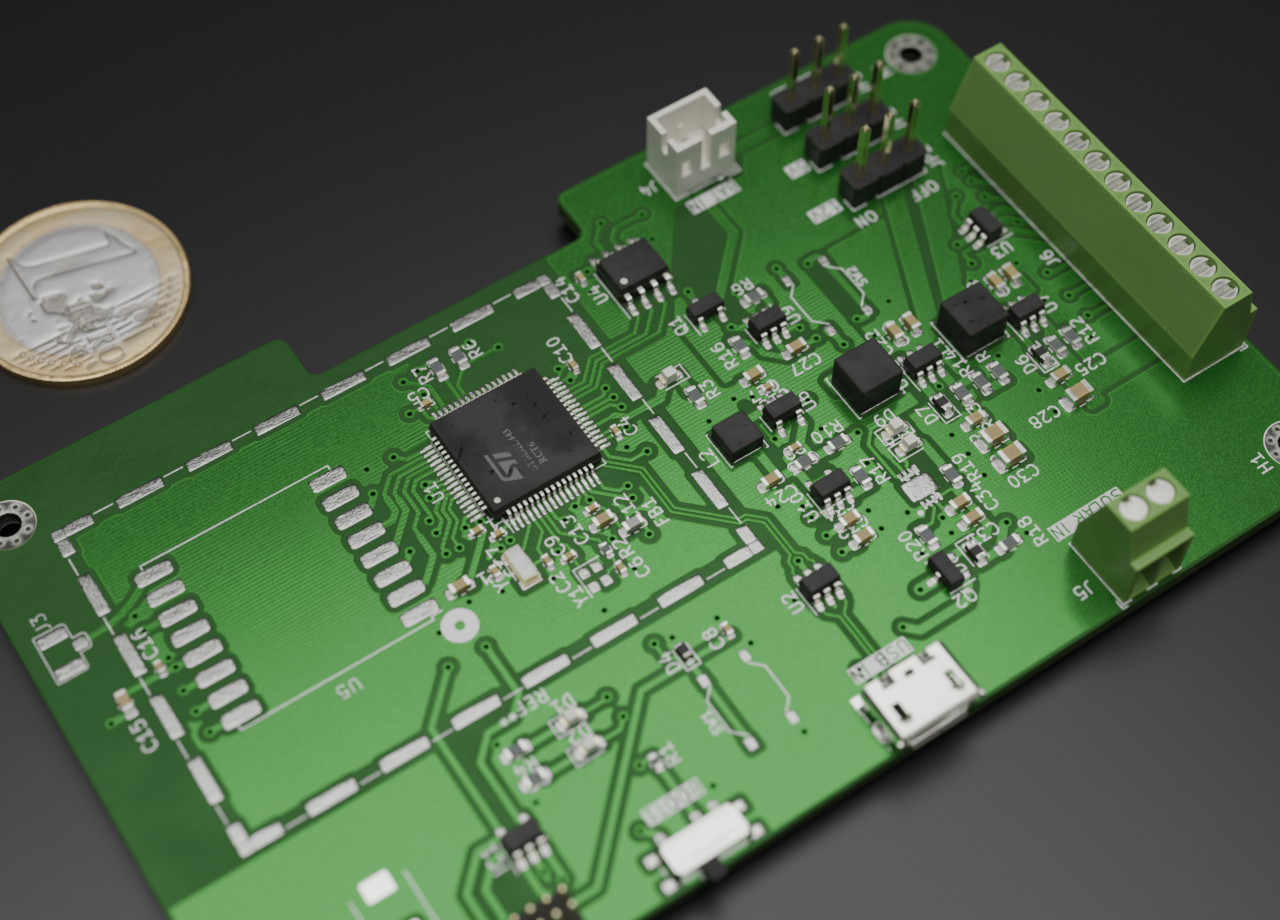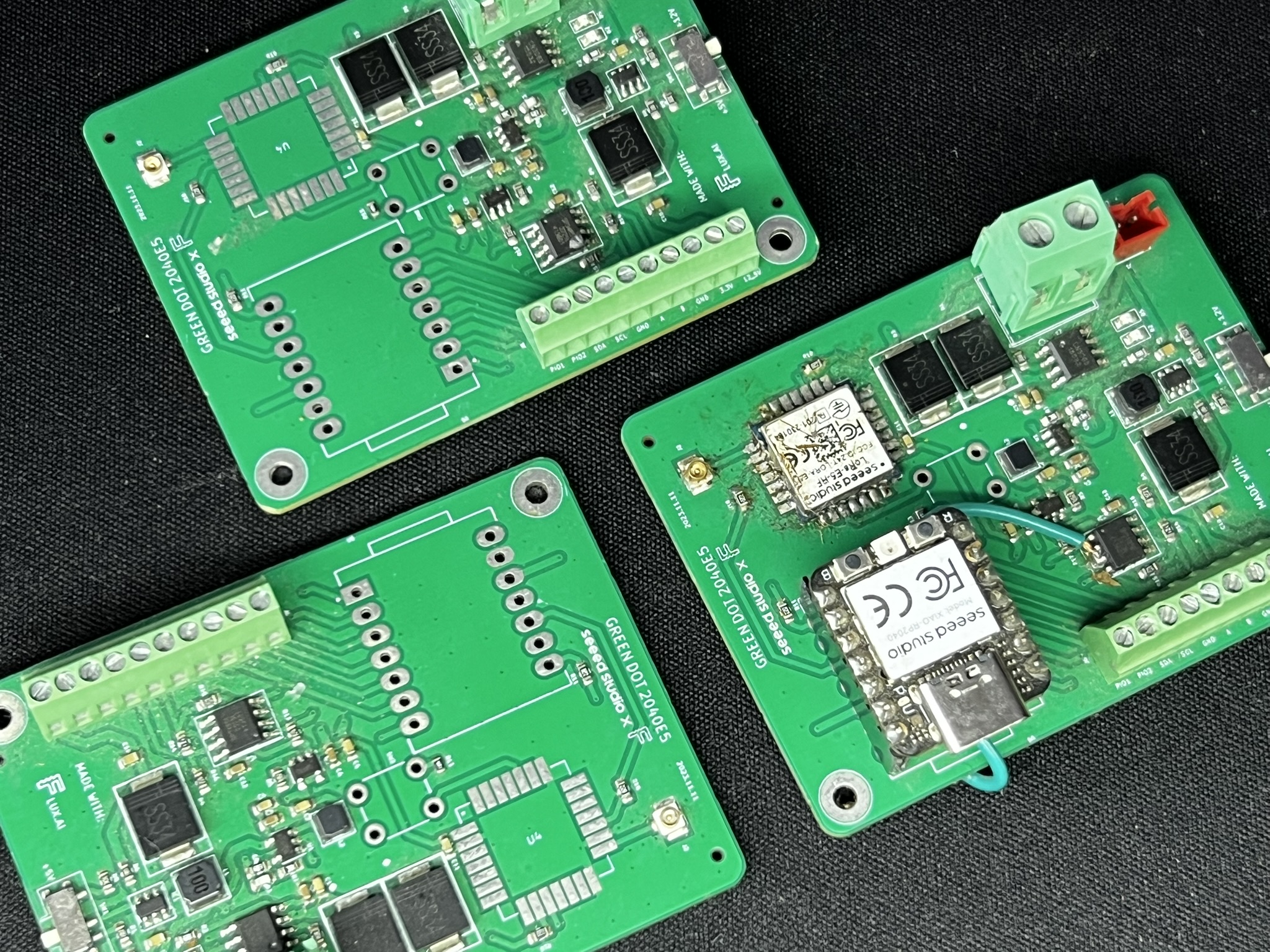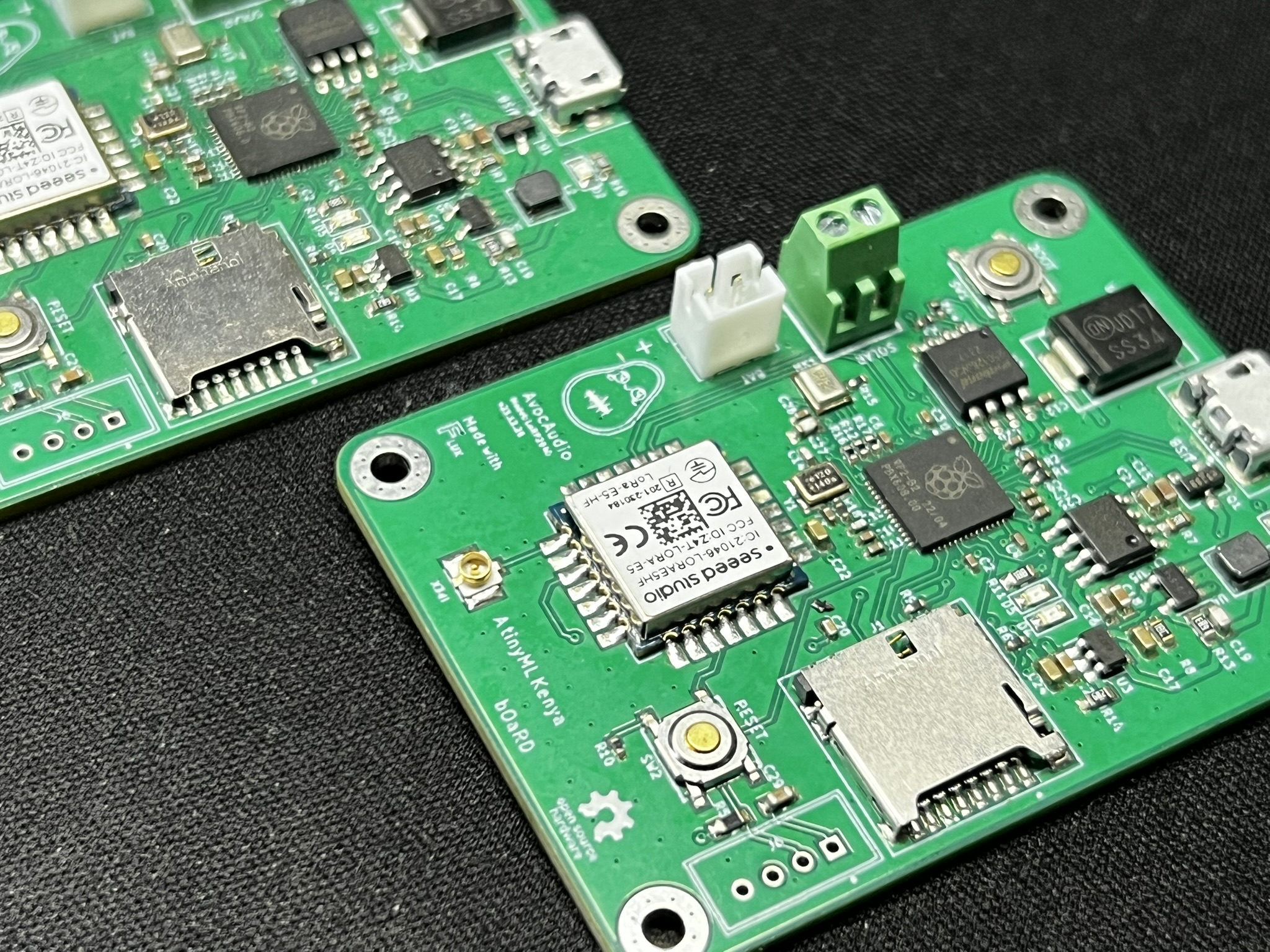IoT Module with MAX3485 and Solar Charging
Project Overview
This project integrates the STM32L443RCT6 microcontroller, RFM95W LoRa module, and a suite of additional components for a highly flexible and energy-efficient IoT solution. Designed for remote sensor networks and battery-powered applications, the system incorporates solar charging, USB interfaces, and debug capabilities, making it ideal for autonomous, off-grid applications such as smart metering, agricultural monitoring, and remote data collection.
Key Features
- STM32L443RCT6 Microcontroller
- ARM Cortex-M4 with 512 KB Flash, 128 KB RAM
- Built-in low-power modes for long battery life
- Integrated hardware cryptography for secure communications
- RFM95W LoRa Transceiver
- Long-range, low-power wireless communication
- High sensitivity (-148 dBm) and configurable output power up to +20 dBm
- Supports LoRaWAN® and custom communication protocols
- MAX3485 RS-485 Transceiver
- Enables RS-485 communication for industrial-grade sensor networks
- Supports half-duplex communication over long distances
- Solar Charging with CN3065
- Integrated solar charger for battery-powered operation
- Supports lithium-ion/polymer batteries
- Regulates charging from solar panels to ensure efficiency and battery longevity
- USB & Debug Interface
- USB interface for data logging and sensor communication
- On-board debug interface for development and troubleshooting
- Flexible I/O and Expansion
- GPIOs, I²C, SPI, and UART interfaces for sensor expansion
- Ideal for remote monitoring, environmental sensing, and IoT applications
Sensors Compatible for Industry & Farm Applications
Agricultural Sensors
- Soil Moisture Sensors – Monitor soil hydration levels for efficient irrigation.
- Temperature and Humidity Sensors – Track ambient conditions for climate control and pest management.
- pH Sensors – Measure soil pH to optimize fertilizer application.
- Light Sensors – Monitor light exposure for crop growth control.
- Weather Sensors – Measure wind speed, rainfall, and barometric pressure for agricultural forecasting.
- CO2 Sensors – Monitor greenhouse gases for optimized greenhouse environments.
Industrial Sensors
- Temperature Sensors (RTD, Thermocouple) – Critical for industrial equipment monitoring and process control.
- Gas Sensors – Detect gases like methane, CO2, or CO for safety and environmental compliance.
- Vibration Sensors – Monitor the health of machinery and equipment for predictive maintenance.
- Pressure Sensors – Used in hydraulic and pneumatic systems for monitoring and control.
- Current and Voltage Sensors – Measure electrical consumption and equipment health in industrial settings.
- Flow Sensors – Monitor liquids and gases in pipelines and process systems.
Applications
- Smart Agriculture – Soil moisture control, weather stations, irrigation management, greenhouse automation.
- Industrial IoT – Predictive maintenance, energy consumption monitoring, asset management.
- Renewable Energy – Off-grid solar-powered sensor networks, environmental monitoring for solar farm efficiency.
- Smart Cities – Environmental monitoring, energy management, infrastructure health monitoring.
Conclusion
This project provides a robust, energy-efficient solution for long-range, battery-powered IoT applications. The integration of solar charging, RS-485 communication, and LoRa connectivity makes it ideal for remote, off-grid deployments in industries such as agriculture, renewable energy, and industrial IoT. With compatibility for a wide array of sensors, it is highly adaptable for various real-world applications, ensuring scalability and flexibility across sectors.






